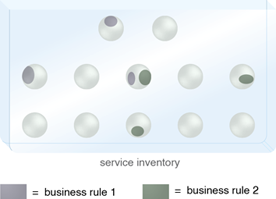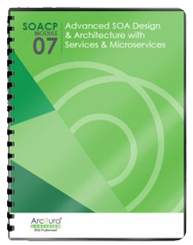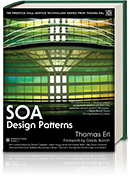SOA Patterns > Inventory Centralization Patterns > Rules Centralization
Rules Centralization (Erl)
How can business rules be abstracted and centrally governed?

Problem
The same business rules may apply across different business services, leading to redundancy and governance challenges.
Solution
The storage and management of business rules are positioned within a dedicated architectural extension from where they can be centrally accessed and maintained.
Application
The use of a business rules management system or engine is employed and accessed via system agents or a dedicated service.
Impacts
Services are subjected to increased performance overhead, risk, and architectural dependency.
Principles
Architecture
Inventory

Just two business rules can find their way into several different business services and, in this case, even a utility service. A global change to either rule will therefore impact multiple services.
Related Patterns in This Catalog
Canonical Resources, Data Model Transformation, Entity Abstraction, Legacy Wrapper, Logic Centralization, Messaging Metadata, Policy Centralization, Utility Abstraction, Validation Abstraction
Related Service-Oriented Computing Goals
Increased Business and Technology Alignment, Reduced IT Burden
This pattern is covered in SOACP Module 7: Advanced SOA Design & Architecture with Services & Microservices.
For more information regarding the SOA Certified Pofessional (SOACP) curriculum,
visit www.arcitura.com/soa.
This page contains excerpts from:
SOA Design Patterns by Thomas Erl
(ISBN: 0136135161, Hardcover, Full-Color, 400+ Illustrations, 865 pages)
For more information about this book, visit www.arcitura.com/books.

